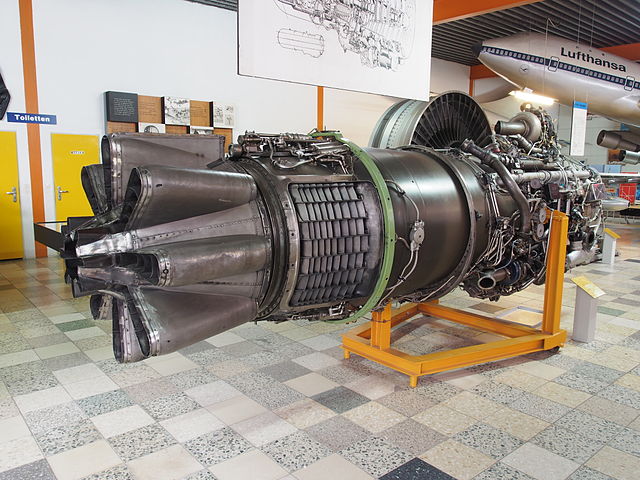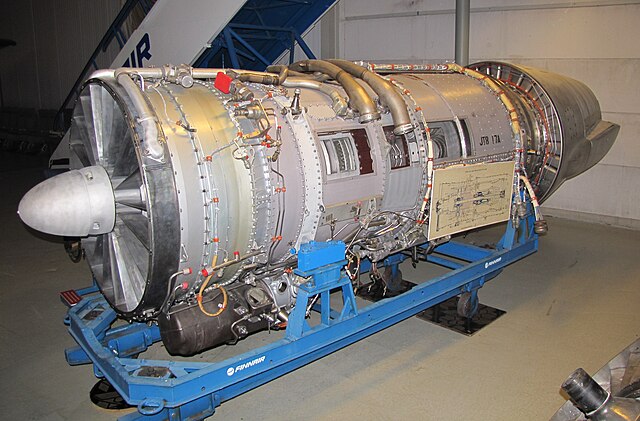The Saturn AL-31 is a family of axial flow turbofan engines, developed by the Lyulka design bureau in the Soviet Union, now NPO Saturn in Russia, originally as a 12.5-tonne powerplant for the Sukhoi Su-27 long range air superiority fighter. The AL-31 currently powers the Su-27 family of combat aircraft and some variants of the Chengdu J-10 multirole jet fighter. Assembly of the engine is also performed under license in India by HAL, for the Sukhoi Su-30MKI. Improved variants power the fifth-generation Sukhoi Su-57 and Chengdu J-20.
Saturn AL-31
AL-31F series 42 (AL-31FM1) at Russian Defense Ministry Innovation Day 2013
AL-41F1 for fifth generation Sukhoi PAK FA (The international aerospace salon MAKS-2011)
A turbofan or fanjet is a type of airbreathing jet engine that is widely used in aircraft propulsion. The word "turbofan" is a combination of the preceding generation engine technology of the turbojet, and a reference to the additional fan stage added. It consists of a gas turbine engine which achieves mechanical energy from combustion, and a ducted fan that uses the mechanical energy from the gas turbine to force air rearwards. Thus, whereas all the air taken in by a turbojet passes through the combustion chamber and turbines, in a turbofan some of that air bypasses these components. A turbofan thus can be thought of as a turbojet being used to drive a ducted fan, with both of these contributing to the thrust.
Chevrons on an Air India Boeing 787 GE GEnx engine
Rolls-Royce Conway low-bypass turbofan from a Boeing 707. The bypass air exits from the fins, while the exhaust from the core exits from the central nozzle. This fluted jetpipe design is a noise-reducing method devised by Frederick Greatorex at Rolls-Royce
General Electric GEnx-2B turbofan engine as used on a Boeing 747–8. View into the bypass duct looking forward from the bypass nozzle and showing fan exit stators/fan blades
The widely produced Pratt & Whitney JT8D used on many early narrowbody jetliners. The fan is located behind the inlet guide vanes.







